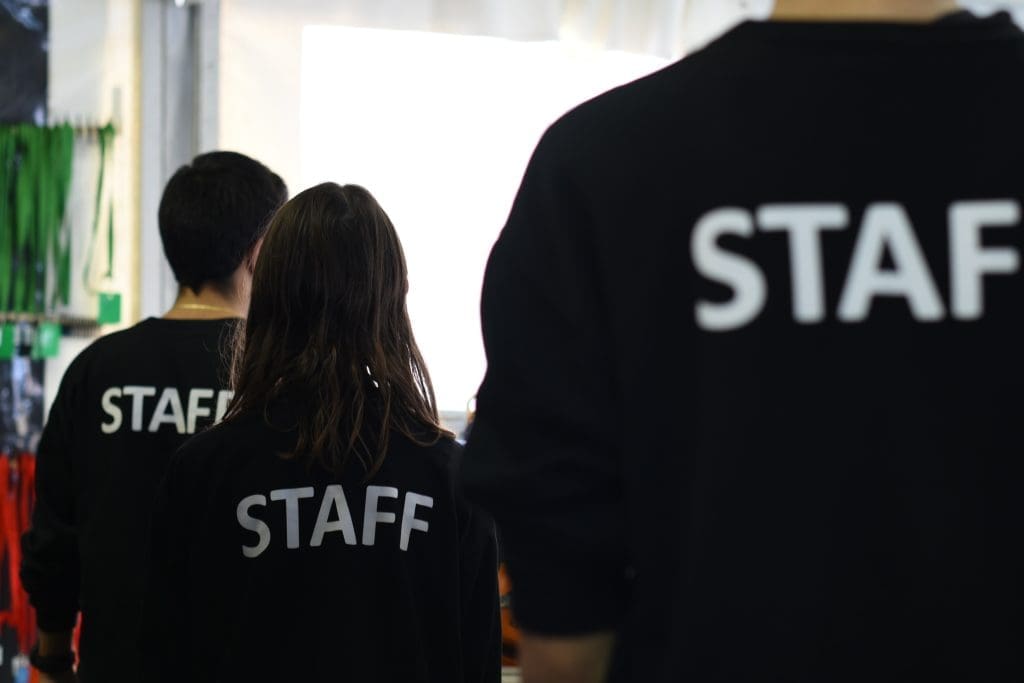Sales development representatives are salespeople whose main focuses are reaching out, prospecting and qualifying leads based on their position in the buying process. Originally a niche role used in a few SaaS companies, the sales development representative (SDR) is now considered a key position in many businesses across multiple industries. They are known for doing the grunt work for more experienced salespeople to approach qualified prospects.
This article is based on an interview conducted with one of our SDR Team Leaders, Junaid Hercules. Growthonics: Part of Quantanite spoke to Junaid to tell us about all things related to being an SDR; the challenges, the ramp time, the recruitment process and more, we dove in deep to understand how to become a successful SDR and extend your stay in the hot seat. We also used this opportunity to interview Mekyle Naidoo and produce our Growthonics: Part of Quantanite infographic to illustrate a typical day in the life of an SDR.
What is a sales development representative?
A sales development representative (SDR) is an inside sales role solely focused on outbound prospecting to generate a sales pipeline of qualified prospects for the rest of the team. The SDR typically manages the lead until the meeting is booked then proceeds to hand it over to the prospects’ account executive to close. They generally only pass on leads that match designated criteria as sales-qualified leads (SQL’s) to an account exec to close. It is generally seen as an entry-level position and is widely considered a great opportunity to get into sales.
Why has the SDR role become so important?
Sales cycles have become much longer, decision-makers seem to be increasing and in addition to that, getting the prospect’s attention isn’t as easy anymore, we need a multi-channel approach. As a result, teams found that by introducing an SDR role to process dozens of leads every day, organisations were able to streamline processes and set appointments with prospects who were a good fit.
What are the responsibilities of an SDR?
- Actively engage with potential buyers by reaching out to them via various channels (email, phone, social networks)
- Qualify leads and move them through the company sales pipeline and funnel.
- Determine which leads are more viable
- Communicate with prospects and deliver value
- Sales intelligence and personalization
- Operations in the CRM
- Appointment setting
- Reporting – meticulously track all relevant information to leads
What does a sales development representative need to succeed?
SDRs can set themselves apart from the competition with simple 3 simple things. A gritty mindset, great sales skills, and knowledge of the buyer persona. Having the right mindset is critical, an SDR should have a never-say-die attitude to turn prospects into meetings. Remember, that you will be dealing with prospects who will most likely reject you 100 times a day, you need to be resilient and creative to overcome that.
With the right skill set, you can accomplish your tasks, handle conversations accordingly and move cycles forward. Lastly, knowledge of the buyer- persona, enables you to relate to the prospect, you can help them with their pain points, and outline how the offering would help them, easing the process of booking meetings and meeting your quota.
What skills do they need?
- Excellent communication
- Gritty mindset
- Resilient (Never-say-die attitude)
- Curiosity and creativity
- Time conscious
- Empathy and self-awareness
Apart from these skills, you need to be sufficient at conducting research. It is an important component of the process and helps you uncover all the information you need to boost your clients’ offering. There are plenty of tools to help, but having the ability to dig for the right information will set you along your way.
How do we measure the success of an SDR?
Based on their responsibilities, an SDR will be assessed on the number of emails sent per period, the number of calls and videos made, and their personalised messaging. For Example: send 35 emails, make 35 dials, create 25 personalised videos, respond to all inquiries etc.
Setting up targets to measure their specific work is a much better way of representing their success than assessing their performance based on sales made. SDRs find it difficult to meet impossible quotas as they are not always in control of meeting their quota, as a lot of these deals rely on input from other people in the sales process. This generally leads to burnout and feeling demotivated as they never seem to really get going.
What is the average ramp time for SDRs?
Onboarding an SDR usually takes 2 to 4 weeks to get them up to scratch, this is an investment, you don’t want to rush it. It is sometimes seen as risky, but keeping them quota-free during the first month can be a blessing. Newly hired SDRs should not be pushed too hard, they might feel that the job is not suitable for them. If you can ease them into the process during the first few days, you really should.
For them to be successful, you need to give them a little time to get their first quick win. Once they achieve that, they will want to dig in straight away. According to a data report conducted by The Pavillion, it takes 3 months on average to start hitting 100% of their targets.
It is about understanding the process for them, knowing how to reach out, how to qualify a lead, how to personalise a lead to stand out. There is absolutely no point in rushing them to only get an objection and not know how to respond. Doing that will only result in confidence plummeting and getting nowhere.
Why is turnover so high in sales?
Well, this is a tricky one. It is one of the hardest positions of any company, but then again, it is also one of the most rewarding due to the added opportunities. Having said that, nobody plans to be an SDR forever, the average length of time that one could stay in the seat is around 14 months according to research conducted by The Bridge Group. That is a sharp decline from 2009, where the average was around 2.4 years.
The short tenure does come with the territory. This is a very tough job, SDRs need to be resilient, this job is full of rejection, if you are not prepared, you are prone to burnout. Keep in mind, if you are hiring ambitious, but impatient people, it shouldn’t come as a surprise when they move on so quickly. You need to be able to extend the tenure with great training, and lots of attention and mentoring to earn their full commitment.
A day in the life of an SDR
We also used this opportunity to interview Mekyle Naidoo and produce our Growthonics: Part of Quantanite infographic to illustrate a typical day in the life of an SDR.
9:00am – 10:00am – I start each day by opening up all my required tools (Google chats, email and calendar etc). I then prepare and send my daily reports and check my inbox for any/all responses from the previous day.
10:00am – 11:00am – As soon as that’s done, I load the latest batch of leads and launch my tasks for the day.
11:00am – 1:00pm – Following that, my next task is to record and complete the personalised videos.
1:00pm – 2:00pm – Once that’s complete, I then spend an hour or so launching all the personalised emails and videos.
2:00pm – 3:00pm – Lunch
3:00pm – 5:30pm – For the latter half of the day, I complete all the follow ups, generic touches and ongoing monitoring of my inbox for responses. Looking ahead to the next day, I prepare a new batch of leads and complete all personalised research for prospects.
5:30pm – 6:00pm – Finally, I end the day by updating the data mastersheet, conversion reports and Hubspot pipeline
How do you run a successful SDR team?
How do you reduce your turnover rate and extend the LTV of your SDRs?
According to a report conducted by The Pavillion, 44% of companies that took part in their survey, have no idea what the true value of their SDR is.
This raises a problem as SDRs are an integral cog of any sales machine. Without a steady stream of leads, sales can be unpredictable. There are many different reasons as to why a sales representative might want to leave your company. Some get recruited by other companies, some will be let go due to underperformance and some will decide it is time to transition into something else.
High turnover rates result in missed opportunities and intangible losses to consider. The team should be about growth and not losing members every week. It demoralises everyone in and around the company, not to mention, hiring new employees is not only expensive, but extremely time-consuming.
Recruitment is a challenge in itself, it requires a large number of resources and months spent training SDRs, which might not even last. From the onset, a problem already exists as the LTV of an SDR is unknown. Managers are caring more about getting them up to speed and hoping they will make the grade, than actually hiring for growth.
Here are 4 Growthonics: Part of Quantanite tips to help you train your SDRs and help them live past their so-called ‘‘sell-by date’’.
Part of the game is knowing your SDRs might not survive past 3 months, but doing something about it is what makes certain lead generation companies stand out from the crowd. Yes, we know it is a grueling field to work in, but surely putting measures in place for your SDRs to succeed will enable them to outlast their ‘sell-by date’.
1. Train your SDRs to be passionate about their work.
In many ways, this point applies to the entire sales team, but it is extremely important to SDRs. Yes, we need experience and product knowledge, but being passionate is just as important. Think about it like this, how can they make a prospect passionate about a product, if they are not passionate about themselves. It is often better to look for passion and coachability than trying to match them with a checklist for the perfect SDR.
Passion can’t be taught, but one’s experience can be built. If someone can’t describe something they are passionate about on their CV, they will most likely not show any enthusiasm to sell your product offering. The most decorated SDRs don’t fake passion, as you can’t keep up with the act for long, it becomes draining. It would be better to go for a company whose product you truly believe in.
2. Attention – know when the right is right
Earning the attention of a prospect is earned. You need to be able to analyse patterns. It is about spending time on perfecting ‘the perfect approach’ for each prospect at the right time.
For example:
- Monday morning and Friday afternoon tend to be the worst times to reach out to a prospect.
- The difficulty of qualifying a lead increases as you spend more time waiting to respond to a prospect.
Use what tactics have worked well in the past, what is working well for your colleagues, and if in doubt do some more research.
3. Be in it for the long haul
Being an SDR is no small feat, you need to be in it for the long haul. Nowadays, many SDRs see the role as a stepping stone to a higher sales position or a route to a more prestigious role somewhere else.
No one can judge you for thinking like this, but one should always focus on their current role. SDRs are much more efficient in their roles when they are fully committed. They have a thorough understanding of how to best operate when they have been in the role for longer. With sales, you are always learning and gaining more experience and knowledge.
4. Be resilient
Many SDR roles require a lot of tasks to be completed in one day. They have to make multiple phone calls, send out emails, do research, and let’s not forget about personalisation. It is a lot to deal with, and on top of that, you receive plenty of no’s, have emails that have never been open, and get hung up on even more times than you can count.
There is no room to be a pushover, you need to be resilient, or you will be up against it every day. Remember this is sales, not everyone is going to like or need your offering; don’t think of it as rejection, it is just someone who is not sure of what their business needs at this moment, they will come back eventually.
Final Thoughts
It is extremely difficult to get experienced SDRs and retain them, it is one of the toughest jobs as it requires resilience, creativity and just a go-getter attitude to succeed. So people will ask you, what is the best tip to avoid SDR turnover?
According to The Pavillion, most companies tend to hire SDRs with 12 months or less of sales development experience. Is this enough? To be honest, there isn’t one approach that clearly defines the best route to take. You can say experience is to blame, but it is very much a guessing game. Some will thrive and survive the churn, and others will get swept away within their first two, three days and end up quitting. It is all about trial and error.
Being in the field of lead generation and managing inside sales, we understand the amount of effort that goes into creating a well oiled and efficient sales development process. We constantly see their hard work and witness the huge amount of effort to combat rejection, quota attainment and phone calls to people you barely know. So hiring lots of people just to increase output or productivity levels, won’t necessarily increase ROI.
You need to hire people who are confident, experienced in sales, and have experience in being rejected multiple times. At the end of the day, it is about being confident that your salespeople can start conversations and maintain them. Hiring someone who has never worked in the field might bring you short-term success in terms of low cost, but won’t do you any good in the long run regarding experience, you are only giving yourself more work to do.
Learn more about our sales development representatives by booking a call with Quantanite today.












